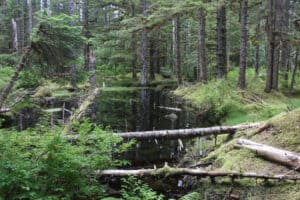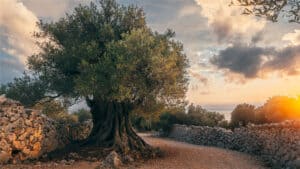Trees are not only a great addition to any garden or landscape, but they can also be great for creating a more private garden or yard. Most trees take at least 10 years to become fully grown, with some taking as long as 150 years to reach their full height. Both ornamental and fruit trees can add color, fragrance, and beauty to a garden, and some don’t take very long to grow. In this article, you will discover the fastest-growing trees you can plant.
Fruit trees, especially dwarf trees, grow at a faster rate than most ornamental trees and start producing fruit before they’re fully grown. Ornamental trees can get much larger than the average fruit tree, and some fast-growing varieties are thick evergreens that provide a beautiful green color all year long. Whether you’re looking to add some tall trees to your yard or some fruit trees to your garden, we can help. Let’s take a look at the fastest-growing trees you can plant.
Fast Growing Ornamental Trees
1. American Sycamore
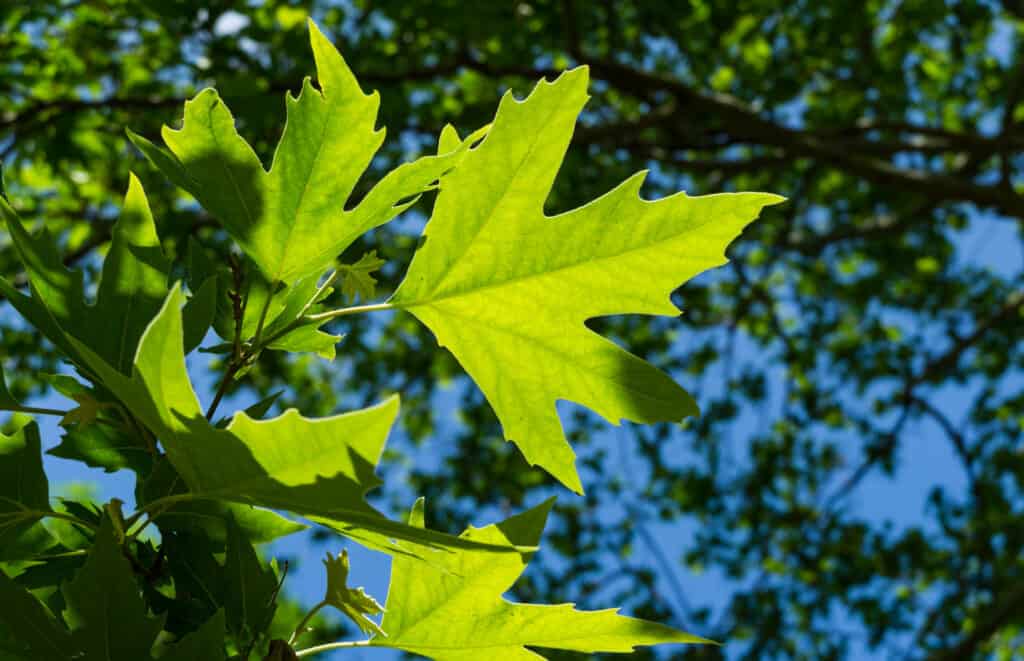
The American sycamore is a deciduous, ornamental shade tree with a very thick trunk and wide canopied leaves.
©iStock.com/Marina Denisenko
| American Sycamore | ||
|---|---|---|
| Growth Per Year | Planting Zone (US) | Mature Size |
| 2-4 feet | 4-9 | 75-130 feet |
The American sycamore is a deciduous, ornamental shade tree with a very thick trunk and wide canopied leaves. This tree takes about 20-50 years to grow to full maturity due to its enormous size. It produces red, yellow, green, and brown flowers during its blooming period in March and April.
Growing an American sycamore tree starts from either a seed or a young tree. Plant it in an area with full sun and moist soil. Sycamore anthracnose is a fungal disease that can harm the tree, so be sure to dispose of dead leaves and regularly prune the tree as it grows. Due to the lack of elasticity in the bark of the tree, sycamores regularly shed their bark. Some inexperienced gardeners may confuse it as a disease, but it’s actually a sign of healthy growth.
2. Carolina Poplar
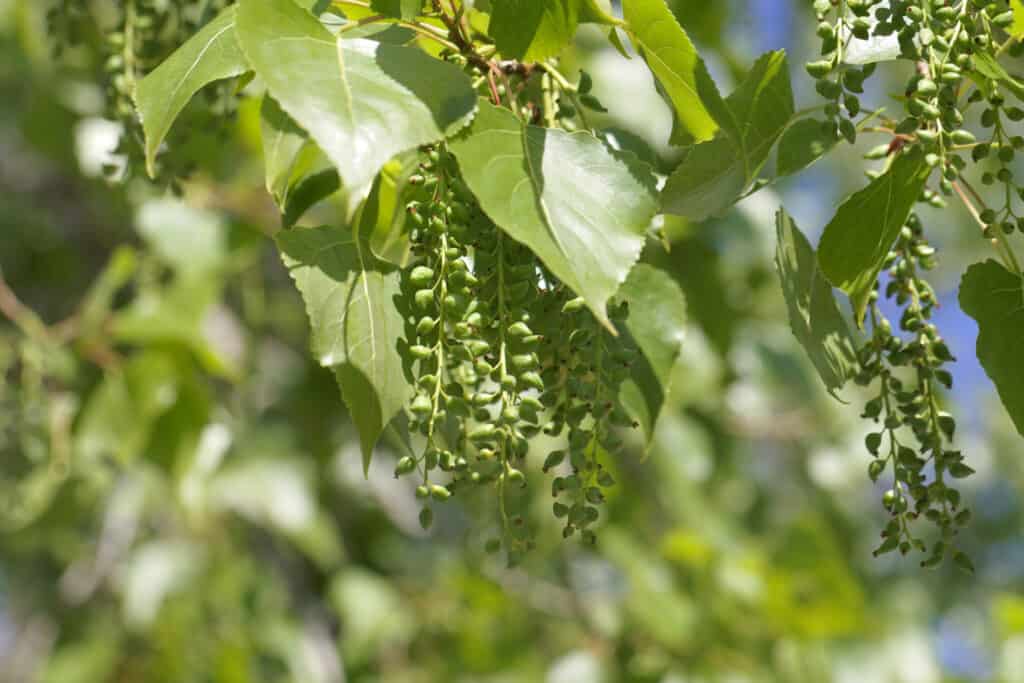
The Carolina poplar is typically planted for timber but also makes a great ornamental shade tree for large gardens or yards.
©iStock.com/weisschr
| Carolina Poplar | ||
|---|---|---|
| Growth Per Year | Planting Zone (US) | Mature Size |
| 2-4 feet | 4-9 | 75-100 feet |
Known as the Canadian poplar or Carolina poplar, this tree is typically planted for timber but also makes a great ornamental shade tree for large gardens or yards. It can take anywhere between 20-50 years to grow to its full size. During April, the Carolina poplar blooms red flowers in long catkins. To grow a Carolina poplar tree typically starts from a clone or young tree. Plant the tree in an area with full sun in fertilized moist soil. It’s important to prune the tree regularly early on to promote branching and keep the tree healthy.
3. Weeping Willow
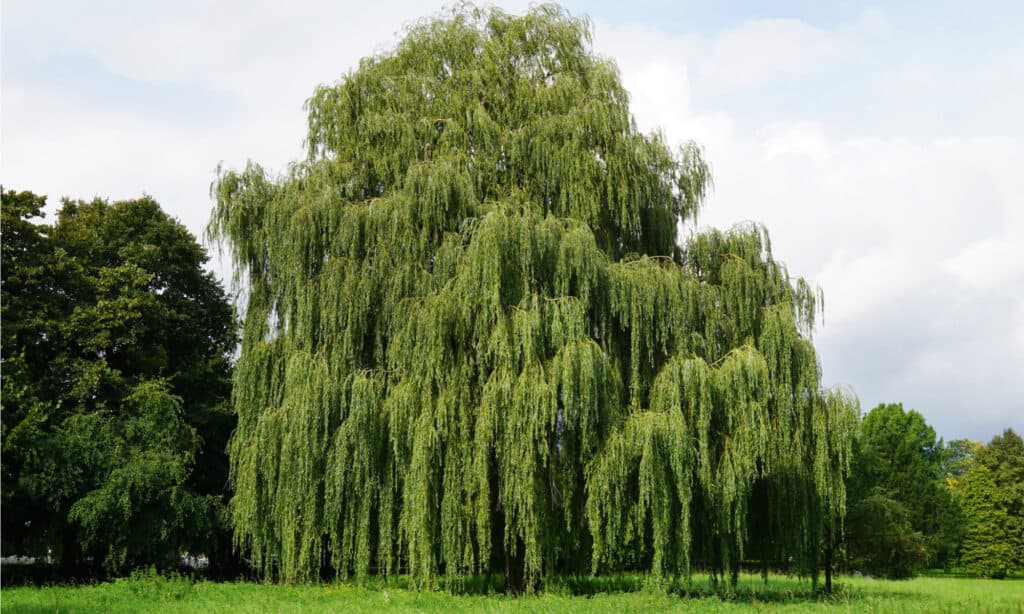
The weeping willow is a fast-growing tree that can average 10 feet of growth in its first year.
©Axel Bueckert/Shutterstock.com
| Weeping Willow | ||
|---|---|---|
| Growth Per Year | Planting Zone (US) | Mature Size |
| 2-6 feet | 6-8 | 30-50 feet |
The weeping willow is a fast-growing tree that can average 10 feet of growth in its first year, though it takes between 10 and 20 years for it to reach full maturity. It is a popular ornamental tree and can easily be distinguished by its ground-sweeping branches. Yellow catkin flowers bloom in late winter to early spring.
Growing a weeping willow is pretty easy due to mild drought tolerance and the ability to thrive in a wide range of soil types. When planting a weeping willow, choose an area that gets at least 4 to 6 hours of sun and partial shade. Be sure not to plant this tree near power lines or sewers because of its long roots. This tree grows best near water but can tolerate drier areas.
4. Cider Gum
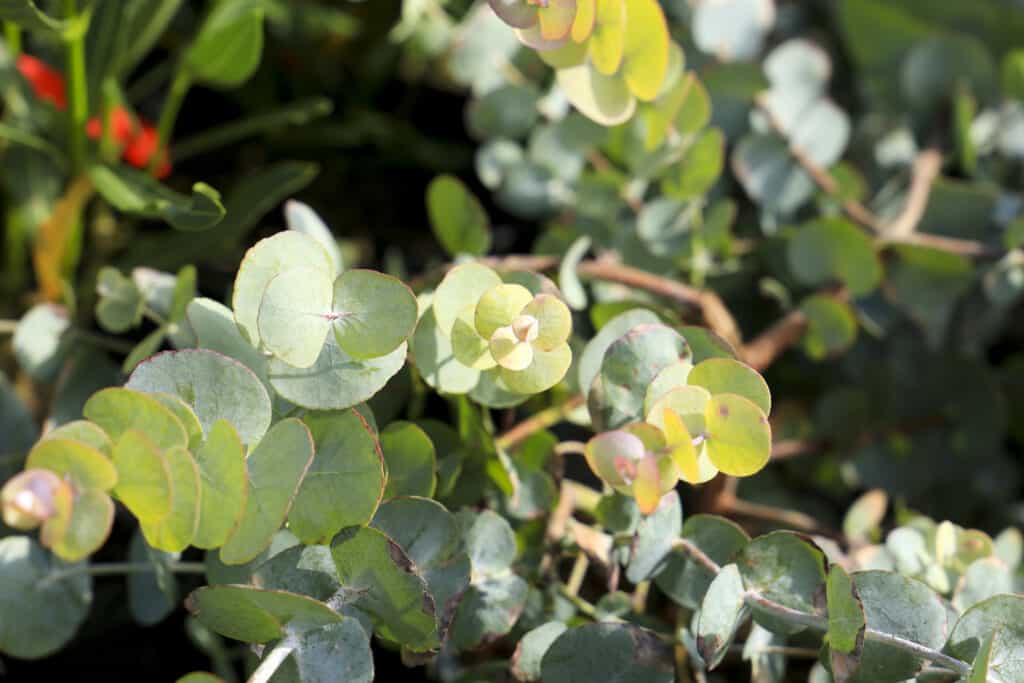
The cider gum tree is one of the fastest-growing and hardiest eucalyptus plants.
©iStock.com/soniabonet
| Cider Gum | ||
|---|---|---|
| Growth Per Year | Planting Zone (US) | Mature Size |
| 3-5 feet | 8-10 | 30-70 feet |
The cider gum tree is one of the fastest-growing and hardiest eucalyptus plants. This is an evergreen tree with dense canopied leaves and smooth bark. It takes about 7 to 10 years for a cider gum tree to reach full maturity. Due to its sweet fragrance and lovely blue-green colored foliage, this is a popular ornamental tree, and its stems are commonly used in floral arrangements.
Cider gum trees are not only great for outdoor gardens but can also be planted in pots as indoor perennials. Whether planting the tree in a container or outdoors, be sure to place it in an area with full sun and keep the soil moist. Even established cider gum trees need ample amounts of water. The best time to plant these trees is in mid-spring or early fall when the weather is warm but the temperature is starting to drop.
5. River Birch
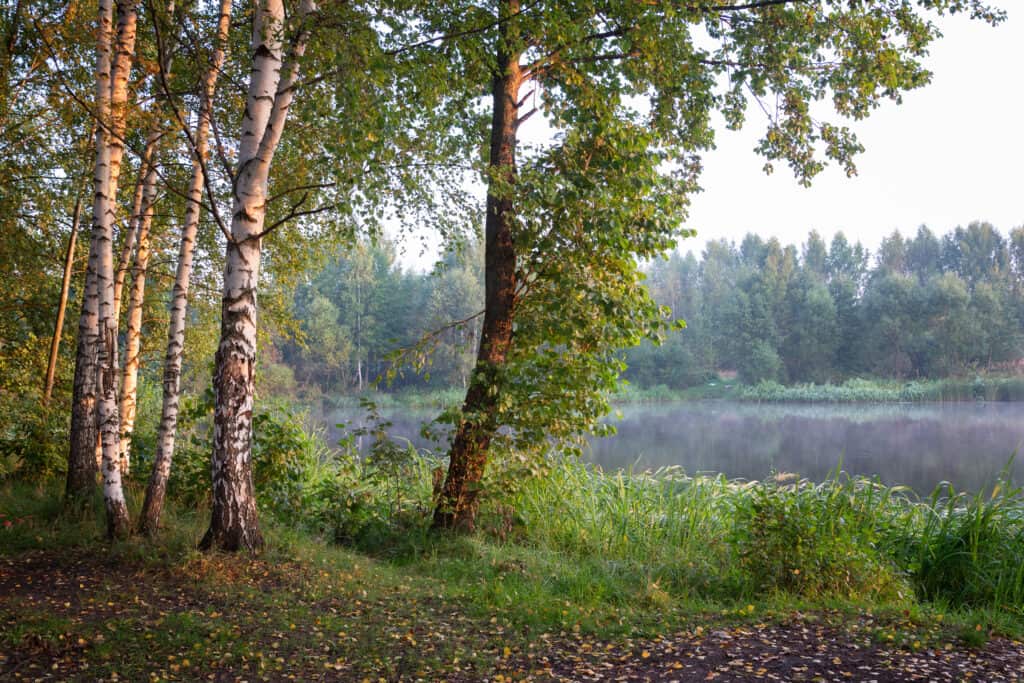
The river birch tree is commonly used as a landscaping tree and can be planted almost anywhere in the United States.
©iStock.com/Volga2012
| River Birch | ||
|---|---|---|
| Growth Per Year | Planting Zone (US) | Mature Size |
| 3 feet | 4-9 | 40-70 feet |
Valued for its relatively fast growth, the river birch tree is commonly used as a landscaping tree and can be planted almost anywhere in the United States. Its leaves are somewhat triangular and have a glossy green color, while its bark is a cinnamon brown that curls and starts to peel once it reaches full maturity. This tree takes between 12 and 25 years to grow to its full height.
The river birch is one of the most adaptable species of birch tree due to its higher tolerance to poorly drained soils and warmer weather. Typically planted in spring or fall, the river birch does best when first planted in a container and then transferred. It thrives in areas with full to partial sun and constantly damp soils, though it can adapt to drier soils.
6. Leyland Cypress
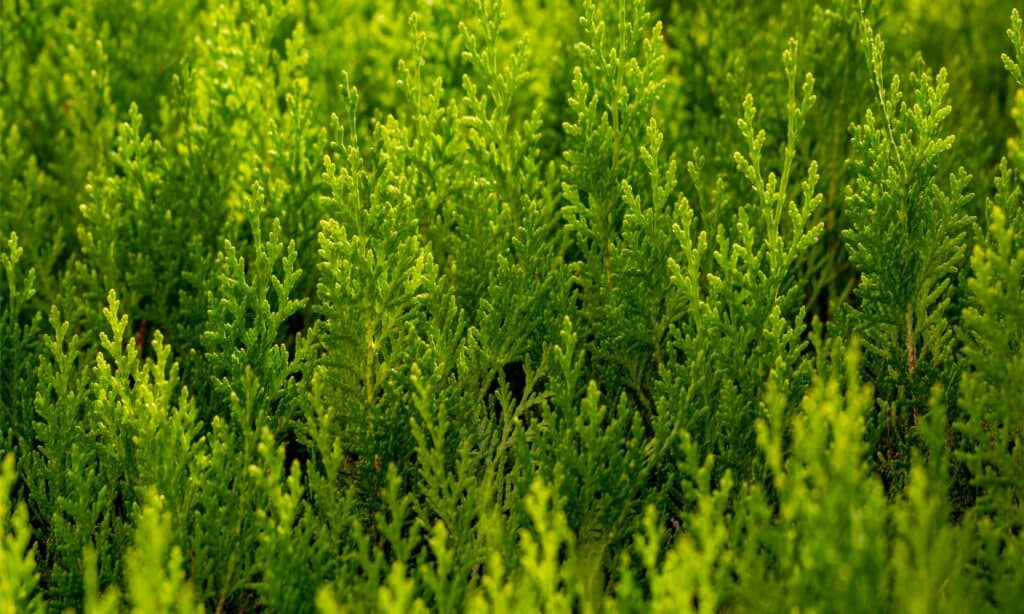
Leyland cypress trees love full sun.
©iStock.com/Ali Çobanoğlu
| Leyland Cypress | ||
|---|---|---|
| Growth Per Year | Planting Zone (US) | Mature Size |
| 3-4 feet | 6-10 | 60-70 feet |
The Leyland cypress is an evergreen conifer that has become very popular as a landscaping tree due to its dense foliage that keeps its color year-round. The foliage is a gray-green color that grows flat on upright branches, and the bark is a reddish-brown color. It takes between 15 and 25 years for a Leyland cypress to reach its full height.
The best time to plant a Leyland cypress is about six weeks before the first frost when it is dormant. Plant the tree in an area that receives at least 6 hours of sun daily in moist, fertile soil. Pruning this tree once in a while is important for keeping it healthy. Once the tree has been established, water once weekly with about 1 gallon for each foot of height. There is a concern for animals becoming sick after grazing on this plant as well, so it’s best not to plant it near animals that are likely to chew on the branches.
7. Tulip Poplar
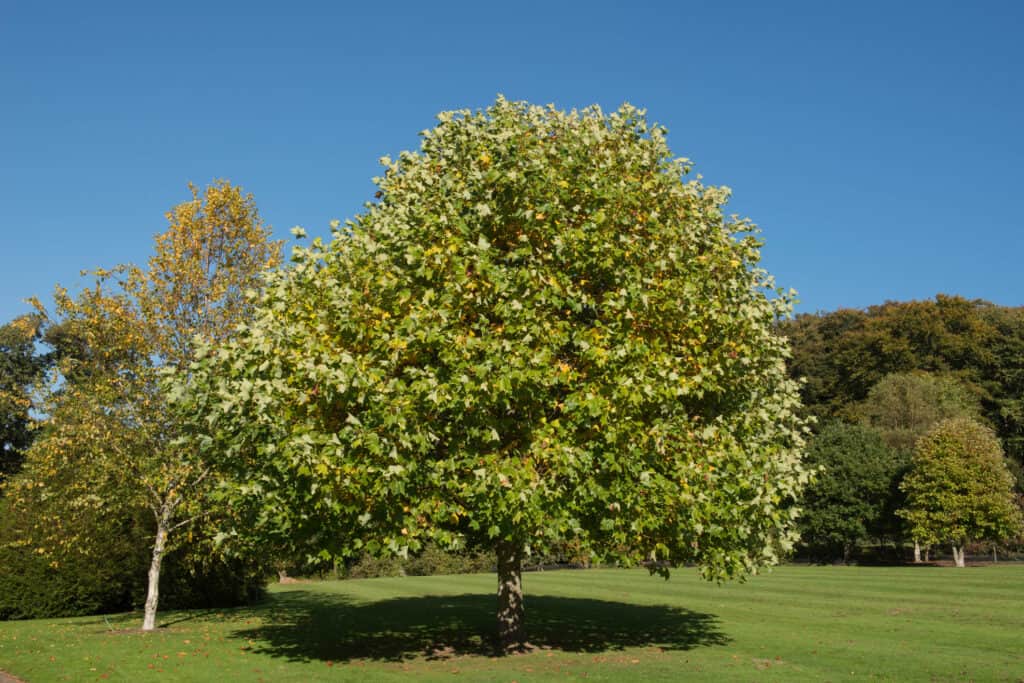
The tulip poplar is a large deciduous tree that is most commonly used as a landscape tree.
©iStock.com/pcturner71
| Tulip Poplar | ||
|---|---|---|
| Growth Per Year | Planting Zone (US) | Mature Size |
| 2-4 feet | 4-9 | 70-90 feet |
The tulip poplar, also known as the tulip tree, is a large deciduous tree that is most commonly used as a landscape tree. It receives its name from its yellow-green flowers that bloom in late spring, which resemble tulips. Not only is this tree loved for its flowers but also for its golden-colored fall foliage. This tree can take anywhere between 15 and 40 years for it to become fully grown.
It’s best to grow a tulip tree from a young tree rather than a seed. Plant this tree between spring and early fall in a full sun area. While the tree is young, be sure to use moist, well-drained soil mixed with some compost. Water often while the tree is young, and use mulch or wood chips to protect shallow roots and keep the soil moist. Older tulip trees don’t need to be watered as often but should be pruned every winter to remove dead or diseased branches.
8. Thuja Green Giant
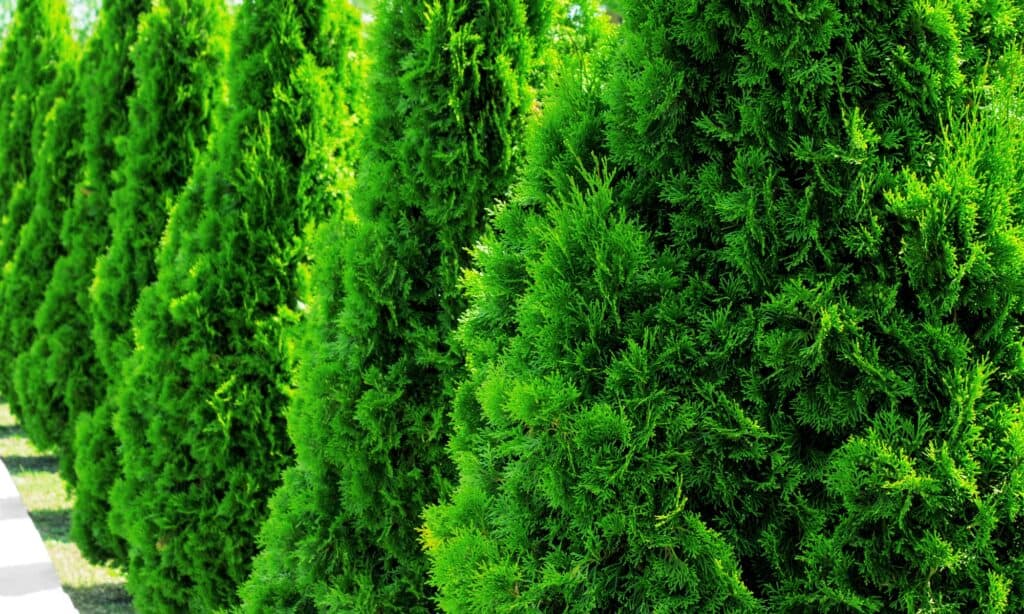
The Thuja Green Giant is an evergreen conifer with thick green foliage.
©iStock.com/Mykola Sosiukin
| Thuja Green Giant | ||
|---|---|---|
| Growth Per Year | Planting Zone (US) | Mature Size |
| 3-5 feet | 5-9 | 40-60 feet |
The Thuja Green Giant is an evergreen conifer with thick green foliage. This tree is commonly used in landscaping along fences for privacy and to reduce noise. It takes about 10 to 20 years to become fully grown and has a lifespan of 40-60 years. Due to its hardiness and relatively consistent growth, the green giant is easy to grow and very low maintenance.
Growing this tree is relatively easy due to its hardness and resistance to most diseases and insects, as well as its drought tolerance. Thuja Green Giants tolerate various soil types as long as it’s kept moist. Be sure to plant it in an area that gets a good amount of sun but also some afternoon shade.
Fast Growing Fruit Trees
1. Peach Tree
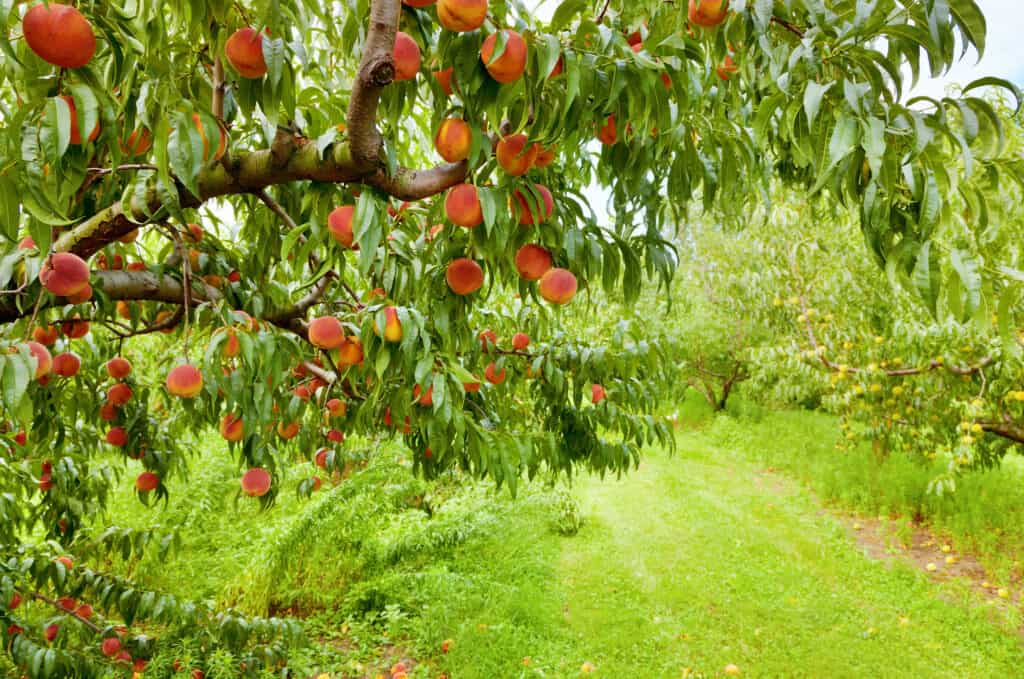
The peach tree is a deciduous tree, with some varieties being self-pollinating.
©Alexey Stiop/Shutterstock.com
| Peach Tree | ||
|---|---|---|
| Growth Per Year | Planting Zone (US) | Mature Size |
| 1-2 feet | 4-9 | 10-15 feet |
The peach tree is a deciduous tree, with some varieties being self-pollinating, so single trees don’t need another tree nearby to pollinate them. Some varieties of peach trees are more susceptible to cold weather, so the type of peach tree should be selected based on the local climate. Most peach trees take about 3 years to start fruiting, but poor care can cause it to take longer. When planting a peach tree, be sure to choose an area with ample morning sun and fertile and well-draining soil. Regular pruning and constant care can help prevent disease and pest infestations.
2. Dwarf Apple Tree
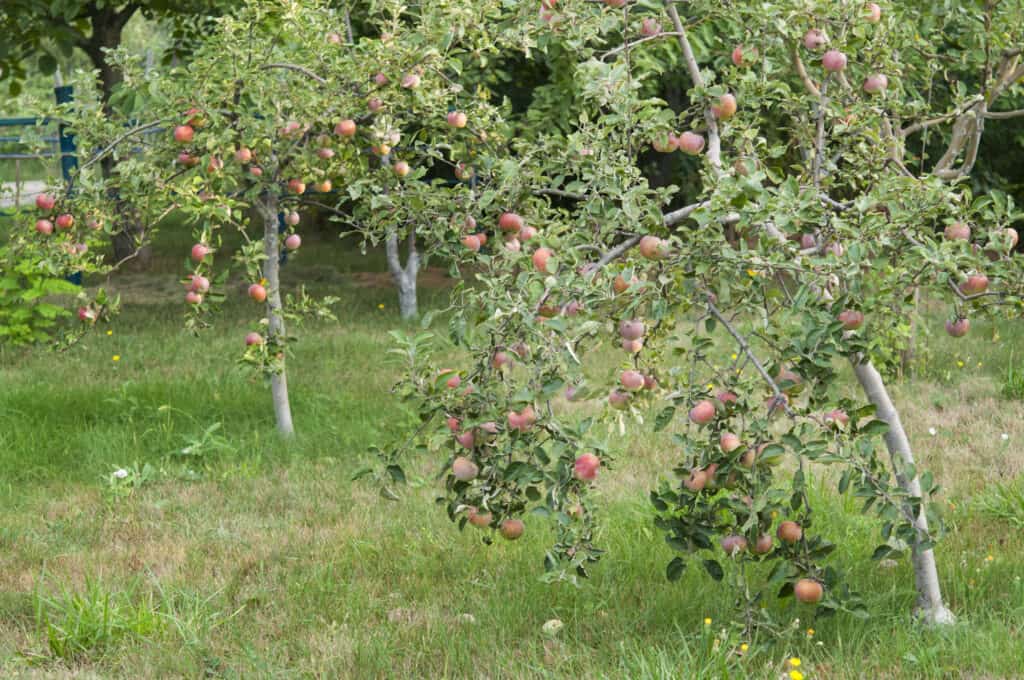
Dwarf apple trees grow faster than their larger counterparts.
©iStock.com/np-e07
| Dwarf Apple Tree | ||
|---|---|---|
| Growth Per Year | Planting Zone (US) | Mature Size |
| 2-3 feet | 3-8 | 8-10 feet |
Dwarf apple trees grow faster than their larger counterparts. It only takes about 2 to 3 years for a dwarf apple tree to start bearing fruit unless the tree is poorly cared for; then, it might take closer to 5 or 6 years. Apple trees must be planted with another apple tree to cross-pollinate and produce fruit. They require a period of cold weather to grow properly, with some varieties needing colder climates than others.
3. Apricot Tree
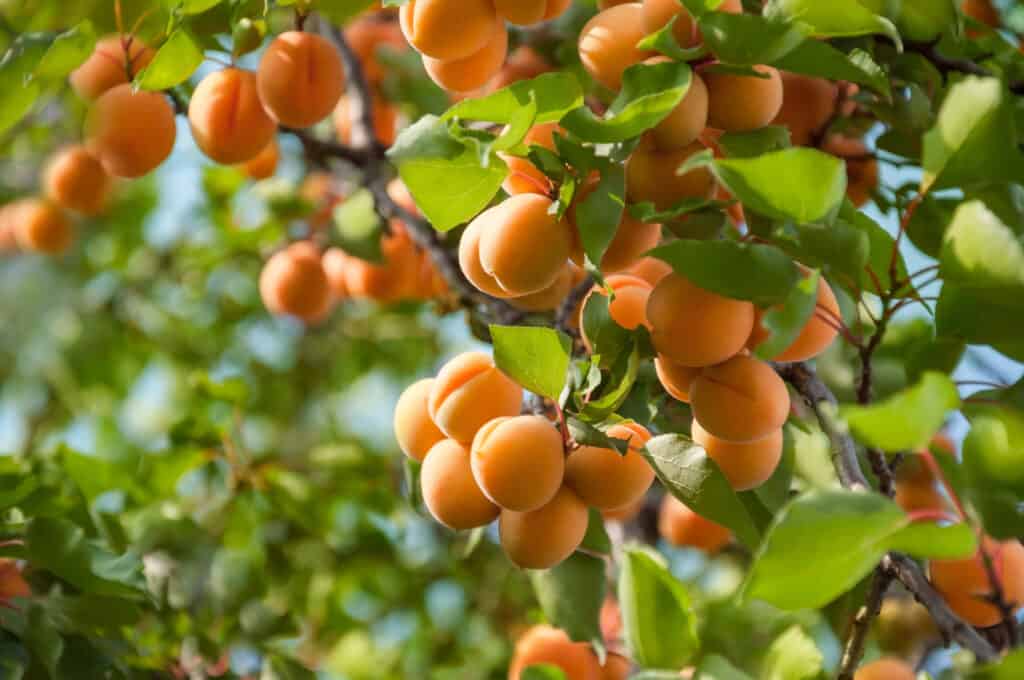
Only some varieties of apricot trees are fast growers.
©iStock.com/Zoya2222
| Apricot Tree | ||
|---|---|---|
| Growth Per Year | Planting Zone (US) | Mature Size |
| 2-4 | 5-8 | 15-20 feet |
Only some varieties of apricot trees are fast growers, particularly the “Early Golden” and the “Moorpark” trees. It takes about 3 to 4 years for these trees to produce fruit, and they are self-fertile, so they can produce fruit without needing to be cross-pollinated. This type of fruit tree is best grown in colder temperatures and requires about 700 to 1,000 chilling hours to produce fruit. When growing apricot trees, be sure to plant them in areas with full sun and well-draining soil.
4. Dwarf Cherry Tree
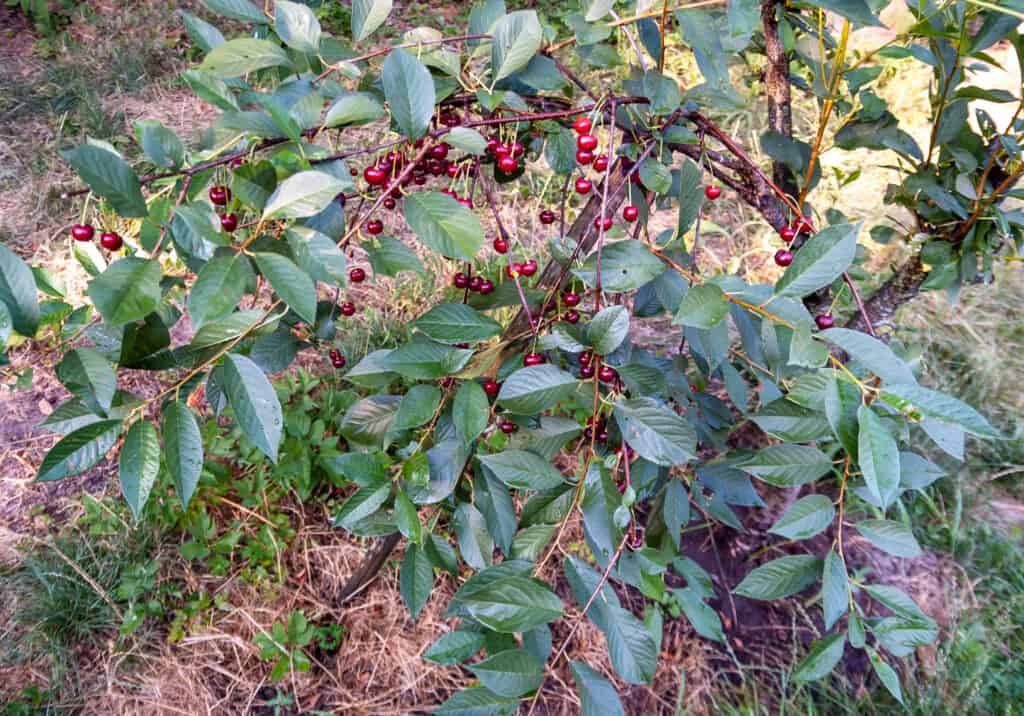
Sweet cherry trees require constant care and excellent conditions to thrive.
©iStock.com/Alexandr Penkov
| Dwarf Cherry Tree | ||
|---|---|---|
| Growth Per Year | Planting Zone (US) | Mature Size |
| 1-2 feet | 5-9 | 8-12 feet |
Sweet cherry trees are more challenging to grow than tart cherry trees, which are more adaptable to different climates. Sweet cherry trees require constant care and excellent conditions to thrive. Tart cherry trees can tolerate different soil types and a rainy, humid climate. Sweet cherry trees require at least two different trees to cross-pollinate and produce fruit, while tart cherry trees are self-pollinating and can produce fruit on their own. Choosing a type of cherry tree depends on the local climate, necessary hardiness, and experience of the gardener taking care of it.
Up Next:
- The 10 Largest Plants In The World
- What to Plant in September: The Complete Guide
- Green Giant Arborvitae vs Leyland Cypress: What’s the Difference
The photo featured at the top of this post is © Axel Bueckert/Shutterstock.com
Sources
- Fast Growing Trees , Available here: https://arbordayblog.org/landscapedesign/the-fastest-fast-growing-trees/
- Fastest Growing Fruit Trees , Available here: https://www.gardeningchores.com/fast-growing-fruit-trees/
- Fast Growing Trees , Available here: https://www.fast-growing-trees.com/pages/fastest-growing-trees
Thank you for reading! Have some feedback for us? Contact the AZ Animals editorial team.



